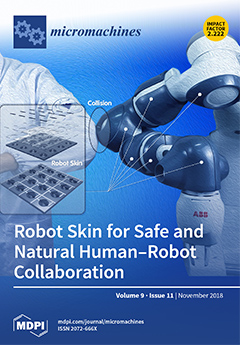This paper presents a microfluidic instrument capable of quantifying single-cell specific intracellular proteins, which are composed of three functioning modules and two software platforms. Under the control of a LabVIEW platform, a pressure module flushed cells stained with fluorescent antibodies through a microfluidic module with fluorescent intensities quantified by a fluorescent module and translated into the numbers of specific intracellular proteins at the single-cell level using a MATLAB platform. Detection ranges and resolutions of the analyzer were characterized as 896.78–6.78 × 10
5 and 334.60 nM for Alexa 488, 314.60–2.11 × 10
5 and 153.98 nM for FITC, and 77.03–5.24 × 10
4 and 37.17 nM for FITC-labelled anti-beta-actin antibodies. As a demonstration, the numbers of single-cell beta-actins of two paired oral tumor cell types and two oral patient samples were quantified as: 1.12 ± 0.77 × 10
6/cell (salivary adenoid cystic carcinoma parental cell line (SACC-83),
ncell = 13,689) vs. 0.90 ± 0.58 × 10
5/cell (salivary adenoid cystic carcinoma lung metastasis cell line (SACC-LM),
ncell = 15,341); 0.89 ± 0.69 × 10
6/cell (oral carcinoma cell line (CAL 27),
ncell = 7357) vs. 0.93 ± 0.69 × 10
6/cell (oral carcinoma lymphatic metastasis cell line (CAL 27-LN2),
ncell = 6276); and 0.86 ± 0.52 × 10
6/cell (patient I) vs. 0.85 ± 0.58 × 10
6/cell (patient II). These results (1) validated the developed analyzer with a throughput of 10 cells/s and a processing capability of ~10,000 cells for each cell type, and (2) revealed that as an internal control in cell analysis, the expressions of beta-actins remained stable in oral tumors with different malignant levels.
Full article






